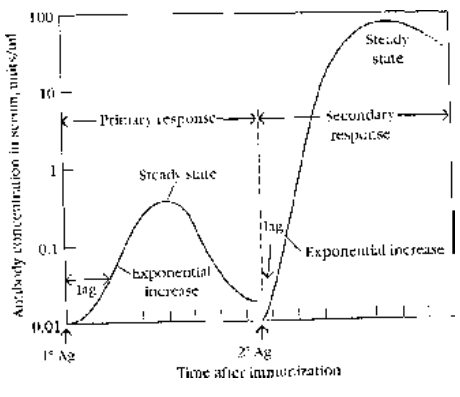Immune Response
Immunology Vaccines of Class 12
Role of various cell types for generating the antibodies are step-wise :
- Recognition
- Specificity
- Effector mechanism
Recognition
Epitopes are recognised by Macrophages and B-lymphocyte. They phagocytose the pathogen leaving the antigenic part exposed. Then lymphocytes generate antibodies accordingly. These two cells are also known as antigen presenting cell.
MHC on the surface of lymphocytes help in this process. MHC is also responsible for other responses like:
- tissue organ transplantation rejection reaction
- the stimulation of lymphocytes for special immune reaction
- the complement fixation
Specificity
Antibodies are specific to antigen and hence particular type of lymphocyte is stimulated.
This ability is acquired by the cell after gene is transformed.
Effector mechanism
This final response includes the interaction between Fc region of antibodies in antigen-antibody complex and the ingesting cell (mcp).
Another part is the interaction of antibodies with blood protein called complement system.
Clonal selection, primary & secondary immune response :
There are specific receptors on B and T lymphocytes ; when these receptors interact with specific epitope the lymphocyte is activated to divide
and generate a clone of cells which also changes into effector cell. This is called as clonal selection.
All the clone cells derived from single parental cell exhibit same specificity to the antigenic determinants.
Some of the activated lymphocytes form memory cells.

Fig. Immune response
First encounter with antigen generates relatively slow primary response because only small number of memory cells are formed. This response
is relatively feeble and declines rapidly.
The next encounter with the same antigen causes more rapid and intense secondary response, because by this time large number of effector cells are formed by memory cells (shown in graph). This is long lasting response.
- Defence Mechanism
- Monoclonal Antibodies And Hybridoma Technique
- Immunisation And Autoimmunity
- Mechanism of action of antibodies
- Types of Antibodies
- Structure of antibodies
- Immune Response
- Types of Immunity
- The cells of immune system
- Immune System
- Exercise-1 Basic concept of Immunology vaccines
- Exercise-2 Basic concept of Immunology vaccines
- Exercise-3 Basic concept of Immunology vaccines
- Exercise-4 Basic concept of Immunology vaccines









